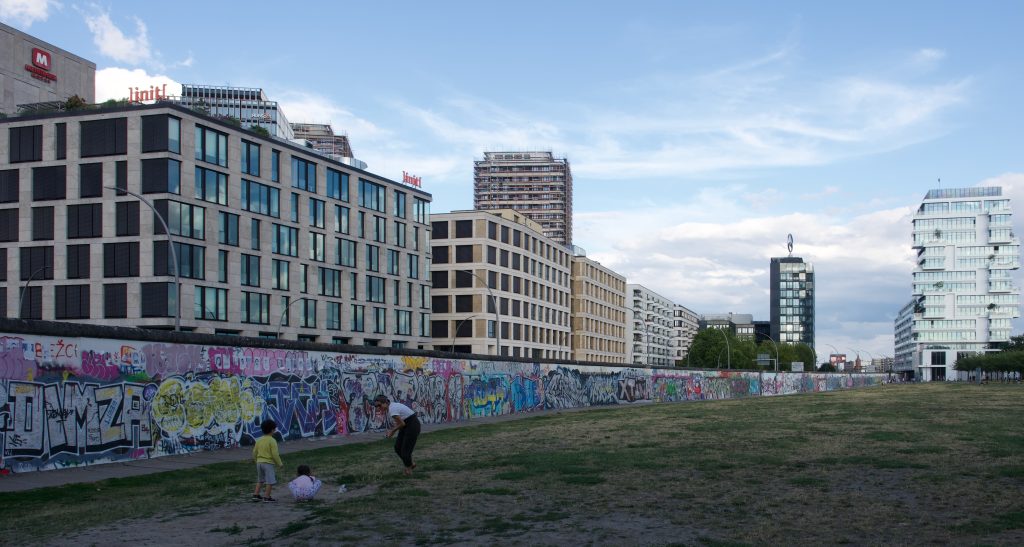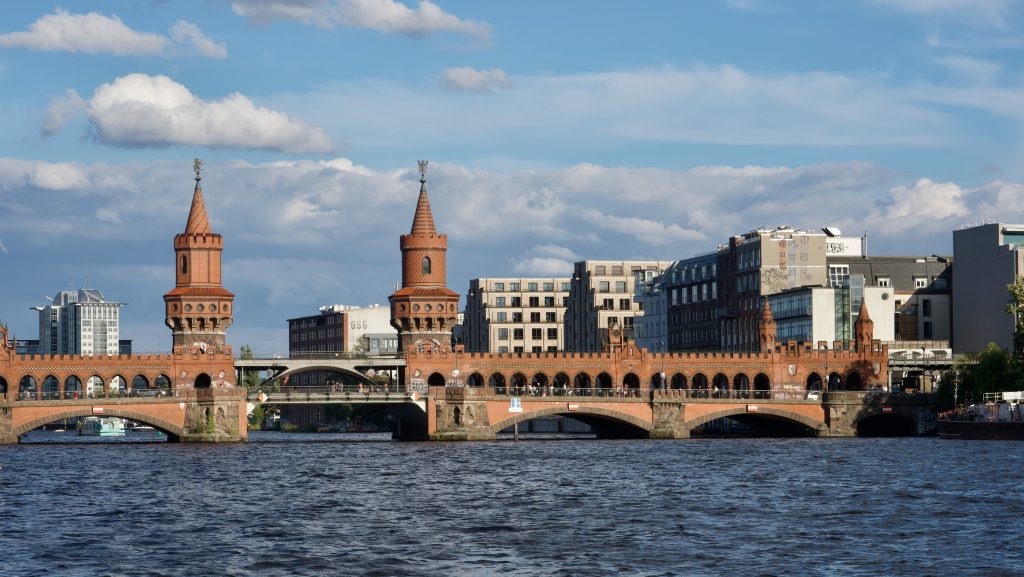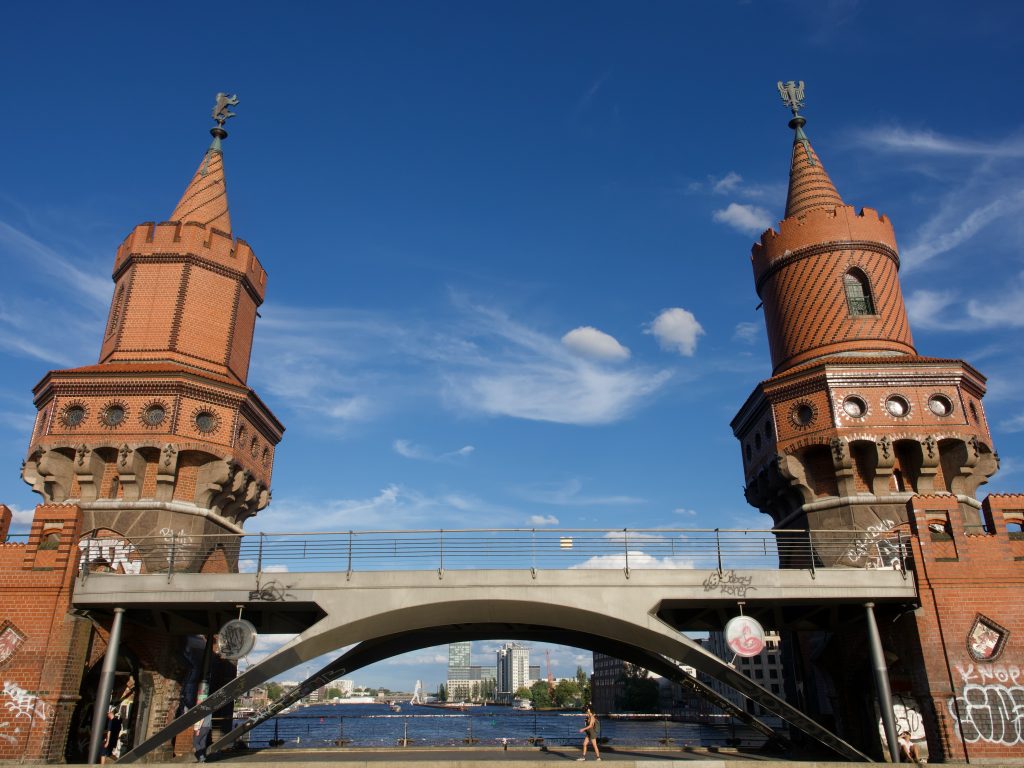We set out this morning by tram to visit the largest Jewish cemetery in Europe, Jüdischer Friedhof Weissensee, based on a tip from Andrea and Peter, and it was a really amazing and moving excursion. The cemetery was founded much later than most Jewish cemeteries in Europe, in the 1880s, because several other cemeteries in town (like the one in Schönefeld, the remnants of which we have visited on a previous trip) were running out of space. Unlike other German cemeteries, Jewish cemeteries are like most U.S. American ones in that they are not “leased” for a certain number of years but kept forever, so gravestones and remains are not removed and remain untouched (hence the tight stacking of many grave markers on top of each other in Prague’s famous Jewish cemetery). Here, in Weissensee, the founders of the 1880s made sure there was plenty of space (42 hectares = over 100 acres); there is still room and modern burials are taking place there again. But most graves predate the rise of the Nazis. Many graves are lavish and tell of the wealth and social prominence of many of Berlin’s Jews before the Third Reich, many of them so assimilated into German society that they adopted up many non-Jewish burial customs or styles. So, while some areas have the traditional simple gravestones with Hebrew-only inscriptions, others are lavish late 19th-century extravaganzas, from mini temples with classical columns or gothic arches to long inscriptions including poems and descriptions of the beloved aunt or mother. The one thing conspicuously missing are human figures of any sort, and animals (we found some lions and a single snake!) were also rare.
Without any elaborate memorial or documentation beyond one sign at the entrance with some historical background, the cemetery itself is a powerful reminder of the holocaust, since most graves predate the Third Reich and certainly the beginning of the open persecution of the Jews after 1938–every now and then we saw a family grave with a post-war addition, often in memory of a family member who died in a concentration camp. But the place is also witness to the insistence of the East German government that it had no special obligations to the survivors and their children; although the Nazis actually left this particular cemetery relatively undisturbed, it was neglected for decades after the war, and only escaped being cut in two by a major road that was planned by a lack of resources in East Germany and then the fall of the wall. In recent years, some monuments were restored and the most dilapidated areas cleaned up, but the striking and hauntingly beautiful thing about the entire cemetery is that it is overgrown with ivy, shrubbery, and volunteer trees, many of its more elaborate graves collapsed and gravestones leaning, although we saw almost no signs of vandalism or willful destruction except the removal of metal gates, which happened under the Nazis. Some graves have been carefully restored, but most are what I think makes cemeteries the important places of contemplation they are: taken back by nature, showing that life is finite and that even the materials that are supposed to last–marble, granite, metal–fall apart.
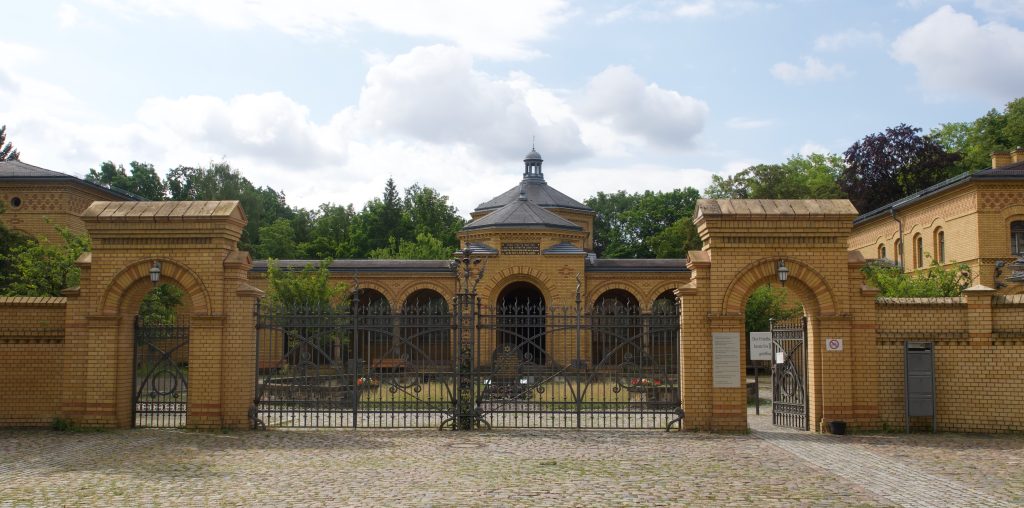
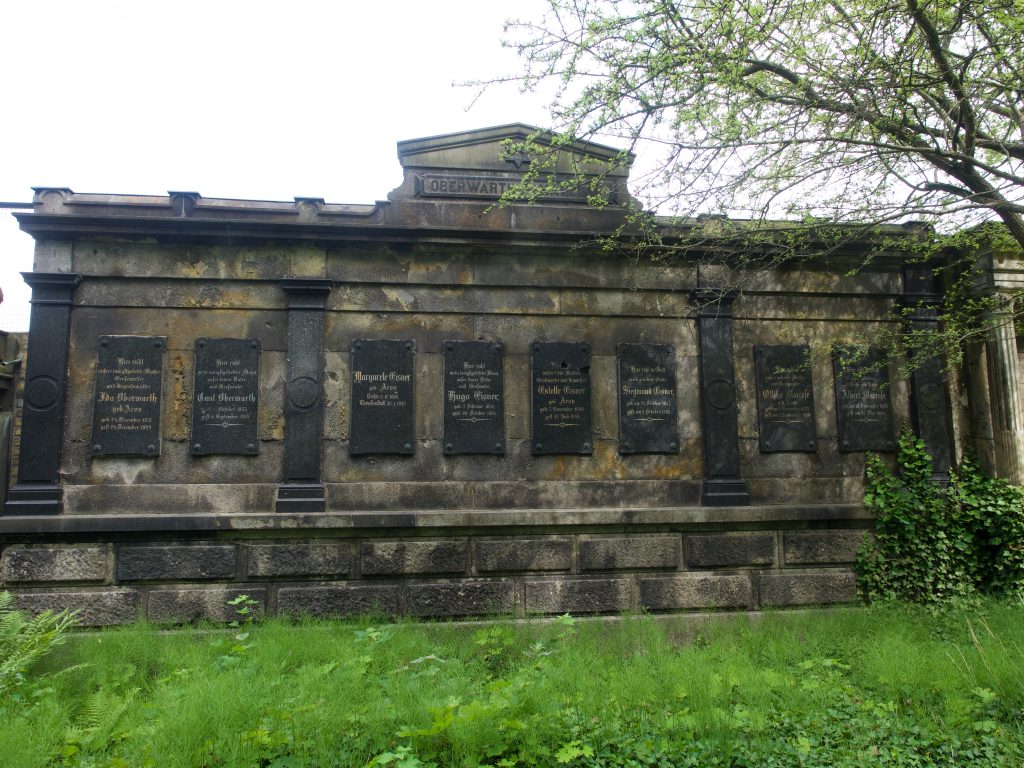

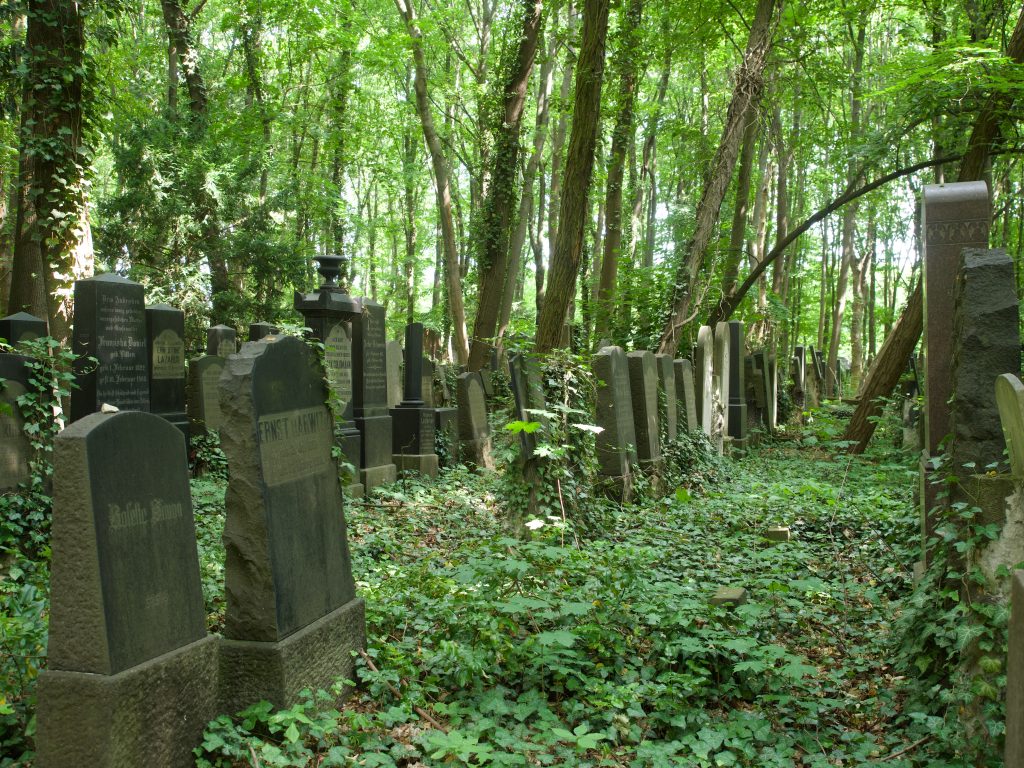
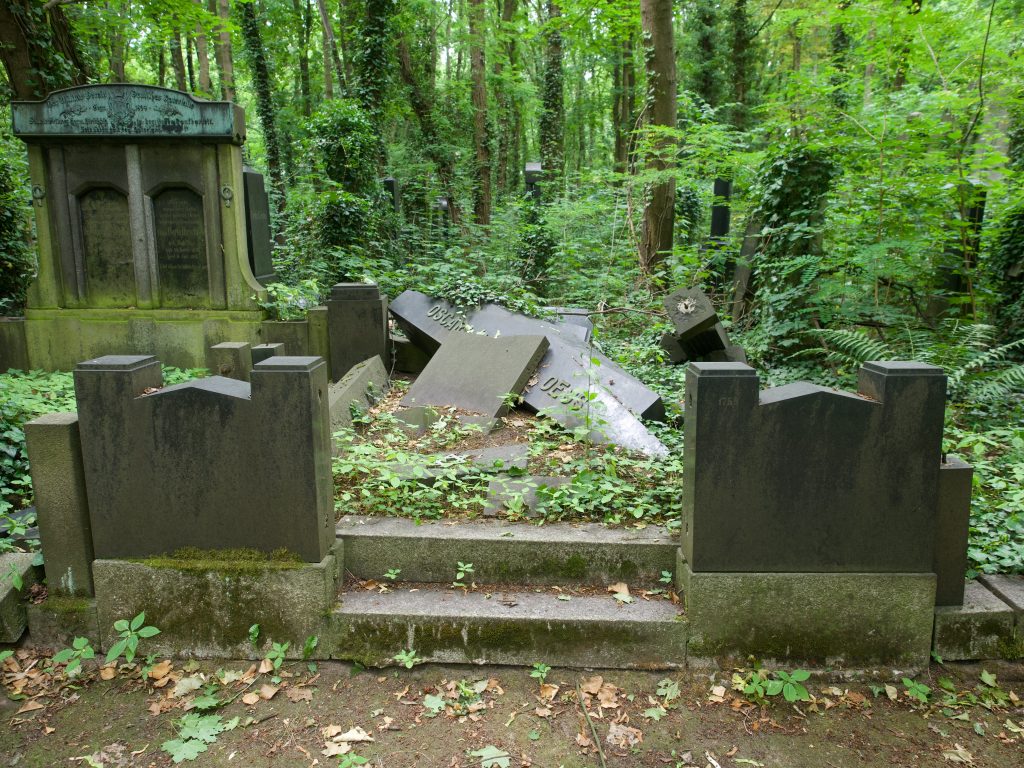
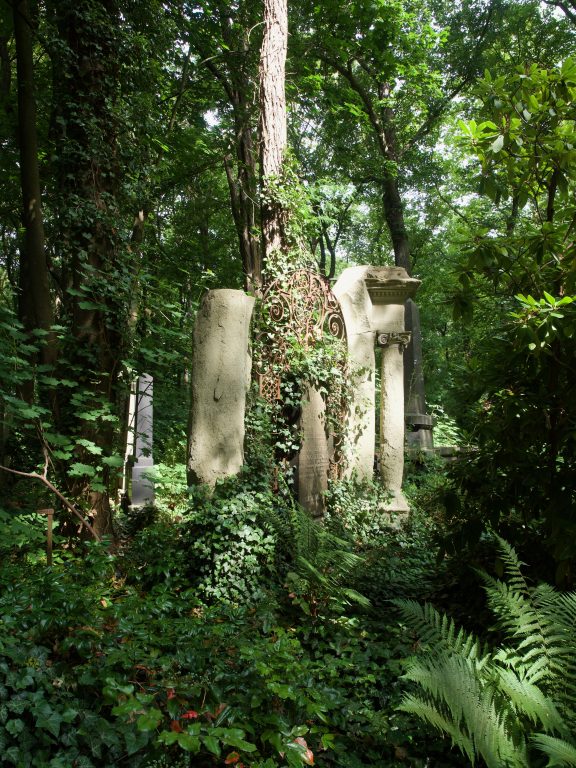

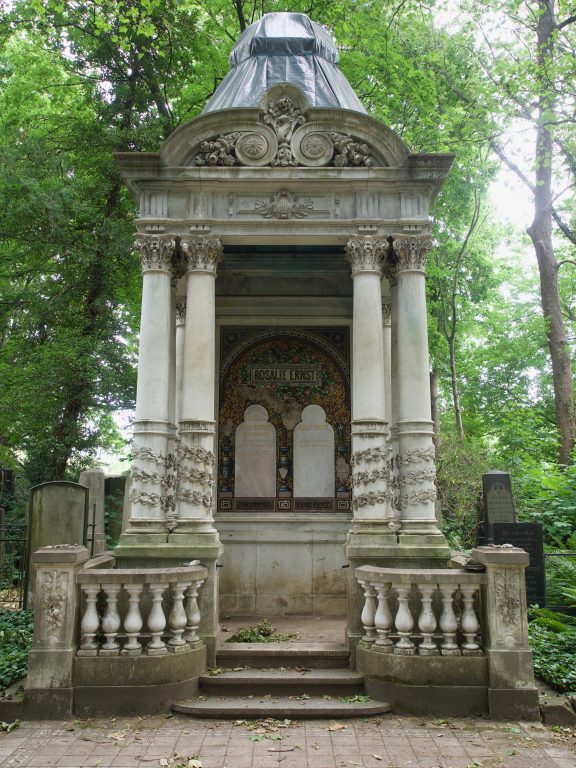
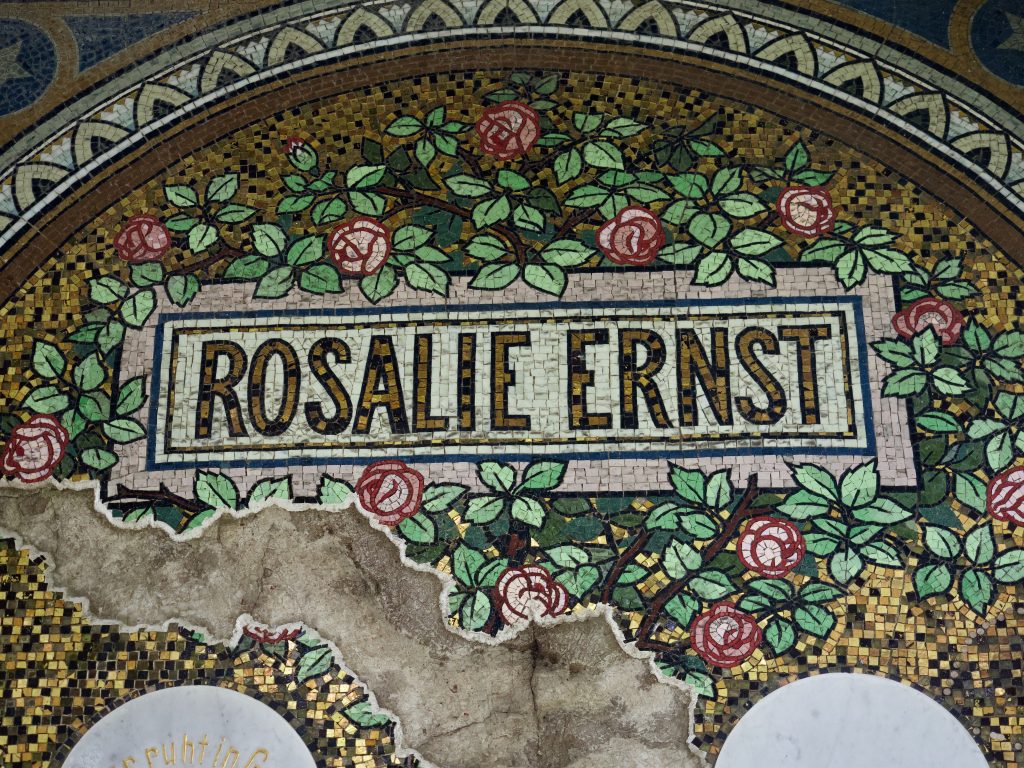
After a few hours of rambling around, we had a diametrically opposed experience of mingling with many LIVING people (although it was also a reminder of the decay of all material things). We went to the “Flea Market at the Wall” (“Mauerflohmarkt”) at the post-1898 Mauerpark in Prenzlauer Berg and walked among the many stands selling antiques, arts, crafts, kitschy souvenirs, and many, many used clothes (with upcycling as fashionable as it is, a huge portion of the stands were people selling clothes). One stand was just hundreds of boxes of miscellaneous and sometimes broken crockery, glassware, porcelain, and old photos and postcards, while someone else was selling fashionable bags in pastel-colored leather, and another stand had thousands of lego figurines. Mark looked at a lot of old cameras, and I was fascinated by some of the art. But ultimately we bought three cards and some yummy Korean street food, looked at a recreated piece of the wall where people can apparently take graffiti lessons (a young man was showing a group of kids in protective vests and masks how to do it), and watched some buskers breakdance and play guitar.
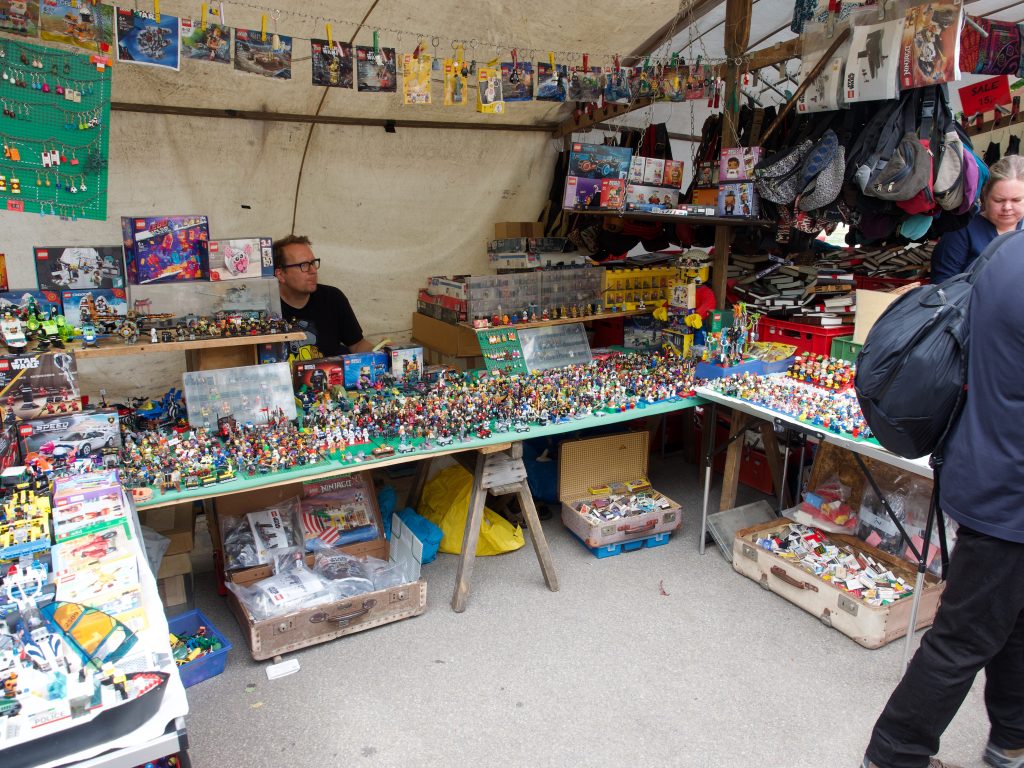
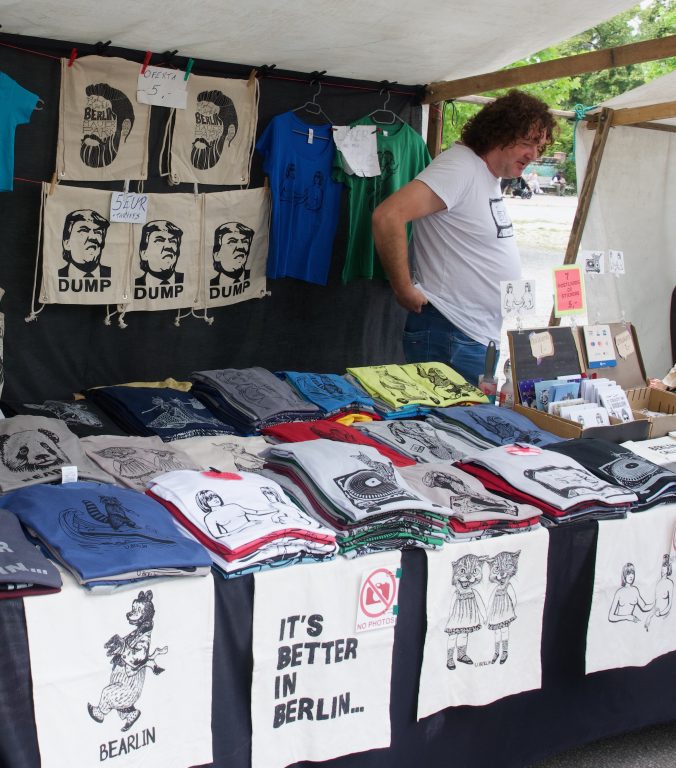
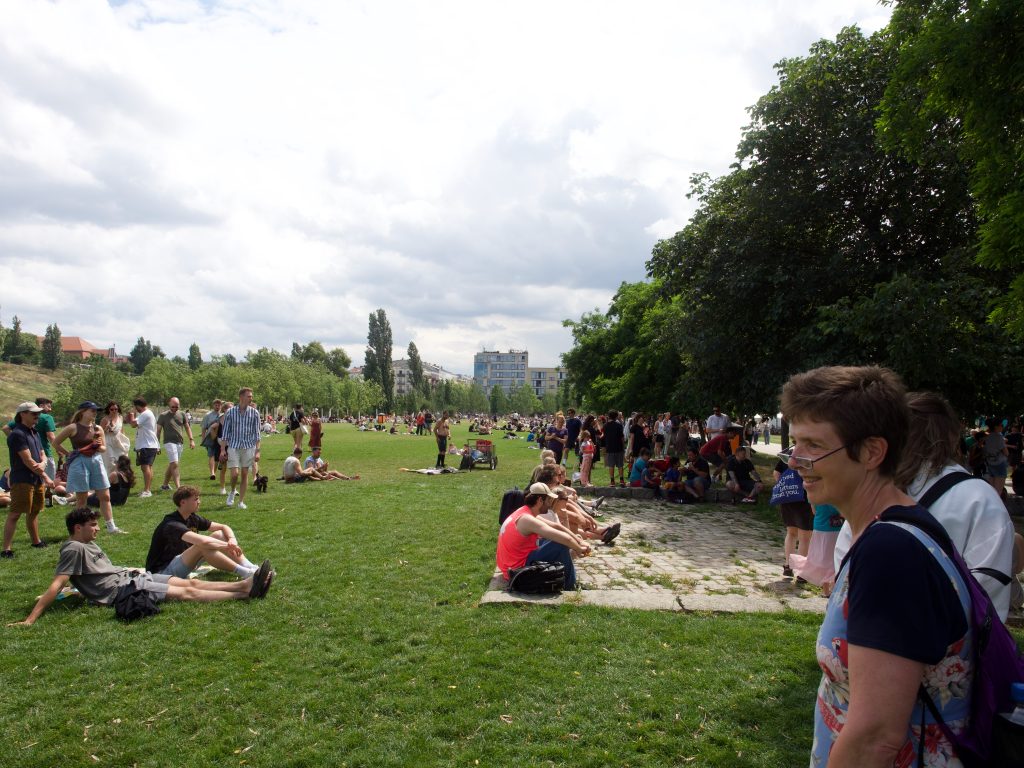
Then we headed to the state library (Stabi) near the Gendarmenmarkt with its famous twin churches (Französischer Dom and Deutscher Dom) because I wanted to see the exhibit on its history and its treasures. We saw some fascinating items on display (including lecture notes taken by a student who sat in Hegel’s lectures in Berlin in the early 18th century, and some crazy handwritten library catalogues from the 17oos. There was also an interesting special exhibit about a couple of ornithologists and early bird-behavior specialists, the Heinroths. Both were really well-curated and we learned a lot! But it was also a lot to take in, so we just took a couple of pictures of things that I had a personal interest in, and about 4:30 pm, we found the conveniently close subway station and went back to the rental to have a little rest and a pasta dinner at home.
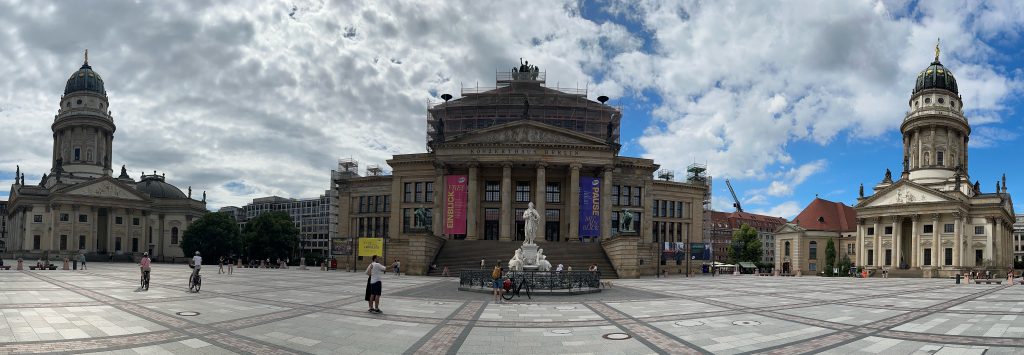
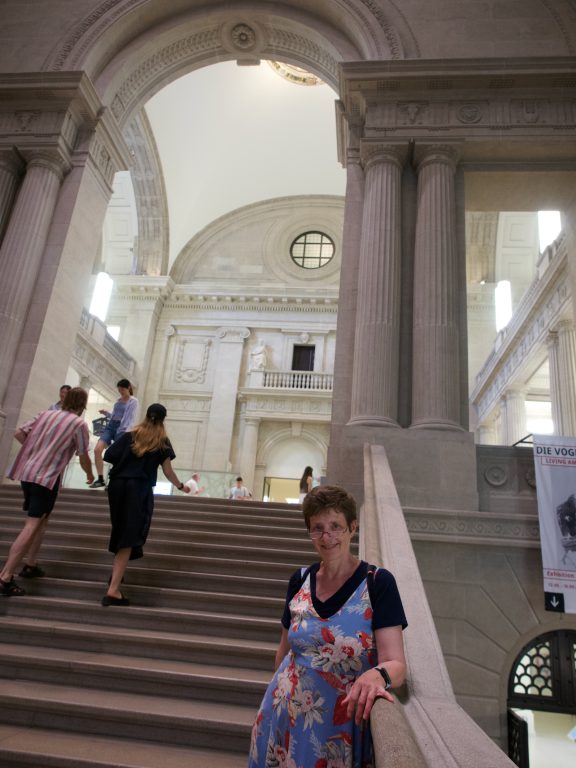
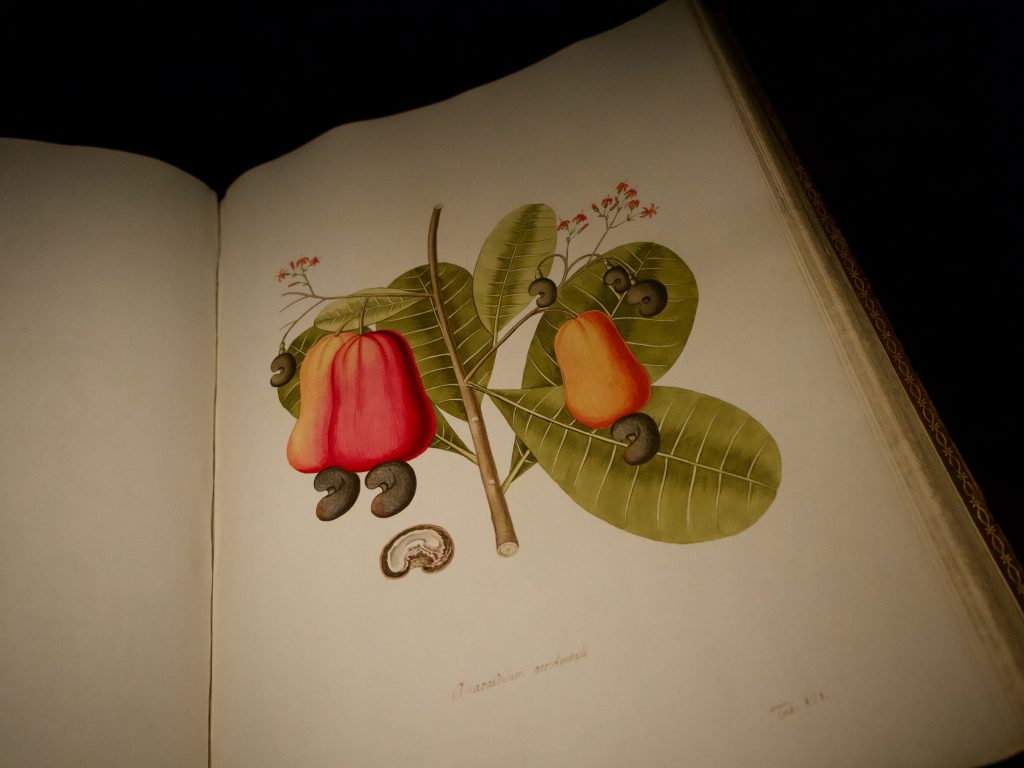
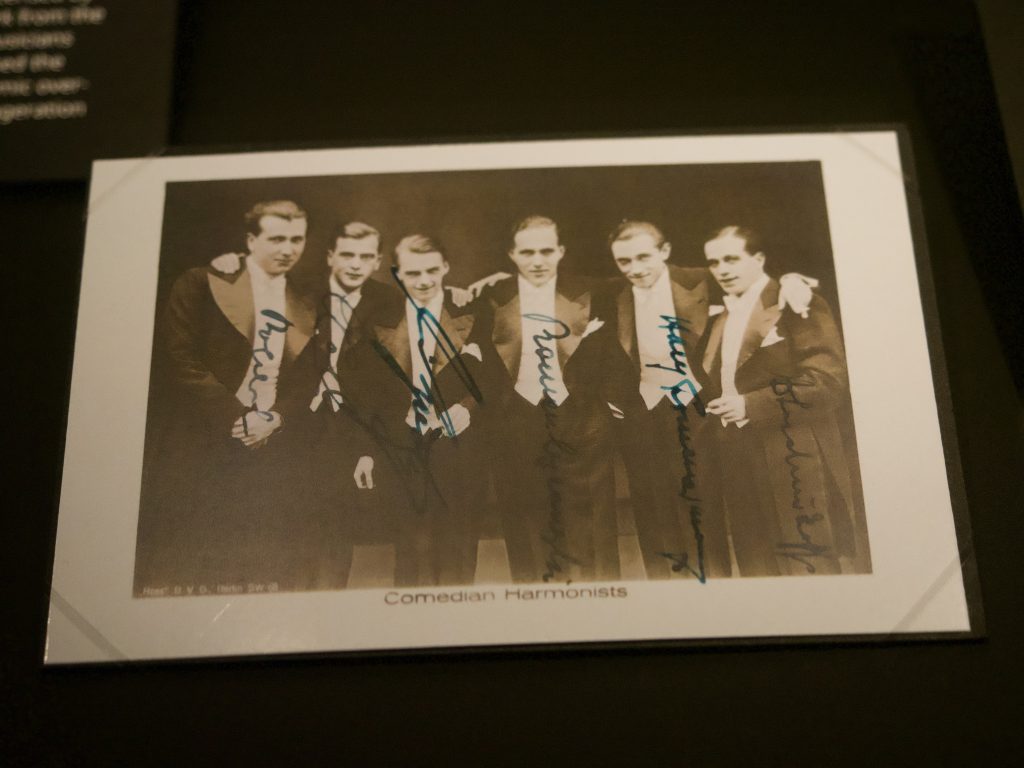
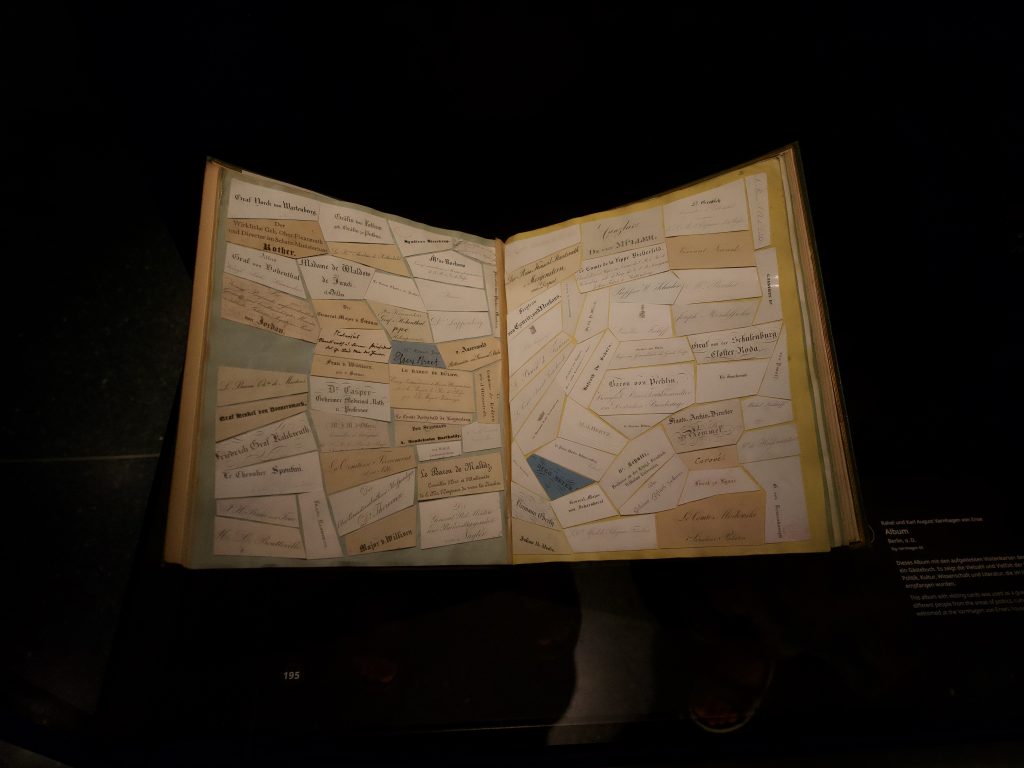
We ducked out later to go see the East Side Gallery, the part of the Wall that was left standing after 1990, with many of the famous paintings that were restored in the 2010s because the Wall needed some repairs. We were tired enough that we went there by bus, even though it is only a mile from here. But we walked along the Spree up to the Oberbaumbrücke, the bridge that connects Friedrichshain (the neighborhood where we are currently, and which used to be in East Berlin) and Kreuzberg (formerly West Berlin), closed for most traffic during the Cold War, and rebuilt in the 1990s in its former red-brick gothic glory. Then we went home for the night. A lovely day, with lovely weather and the BEST breeze to keep us relatively cool both while we were out and about and when at the apartment!
